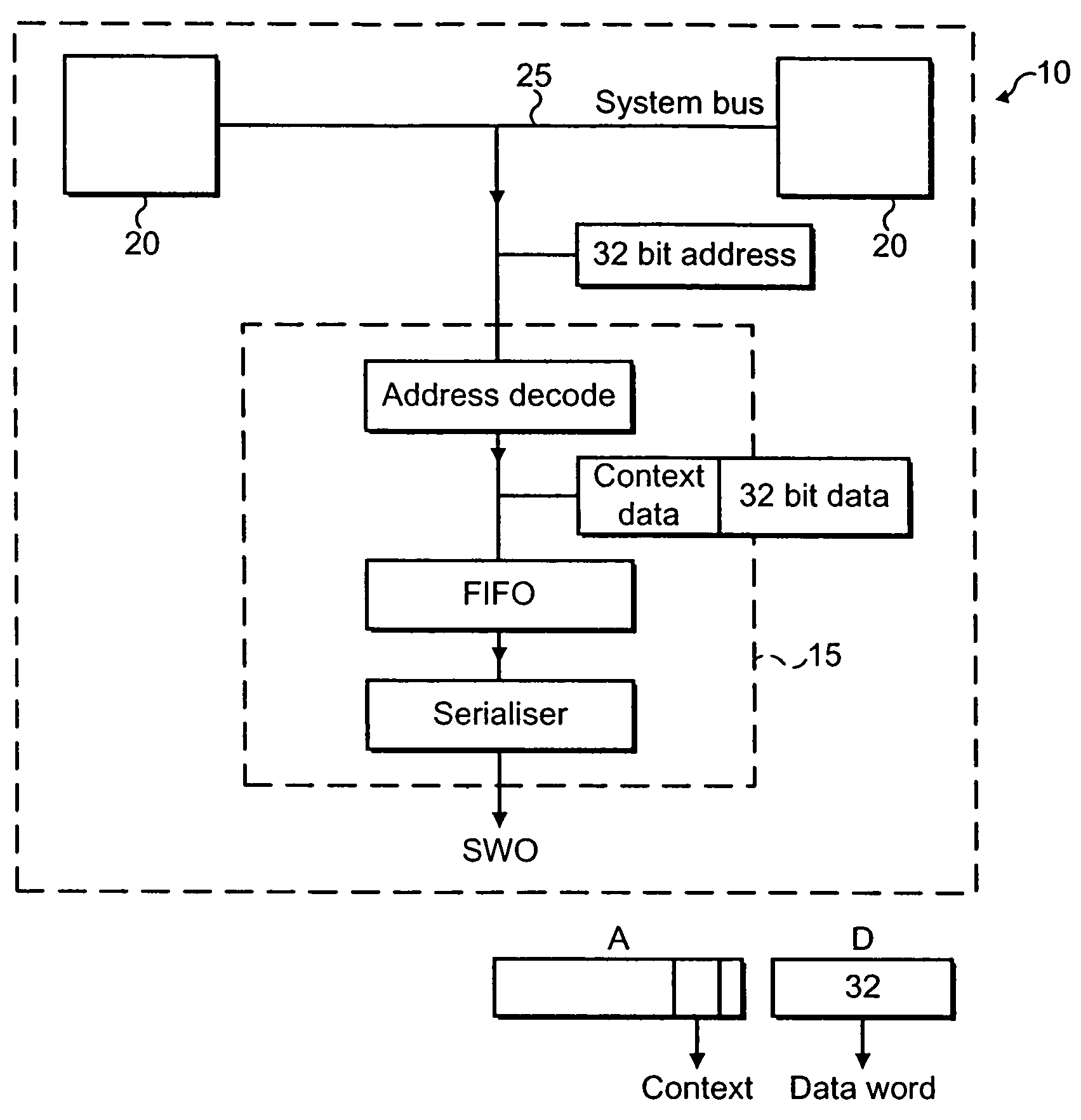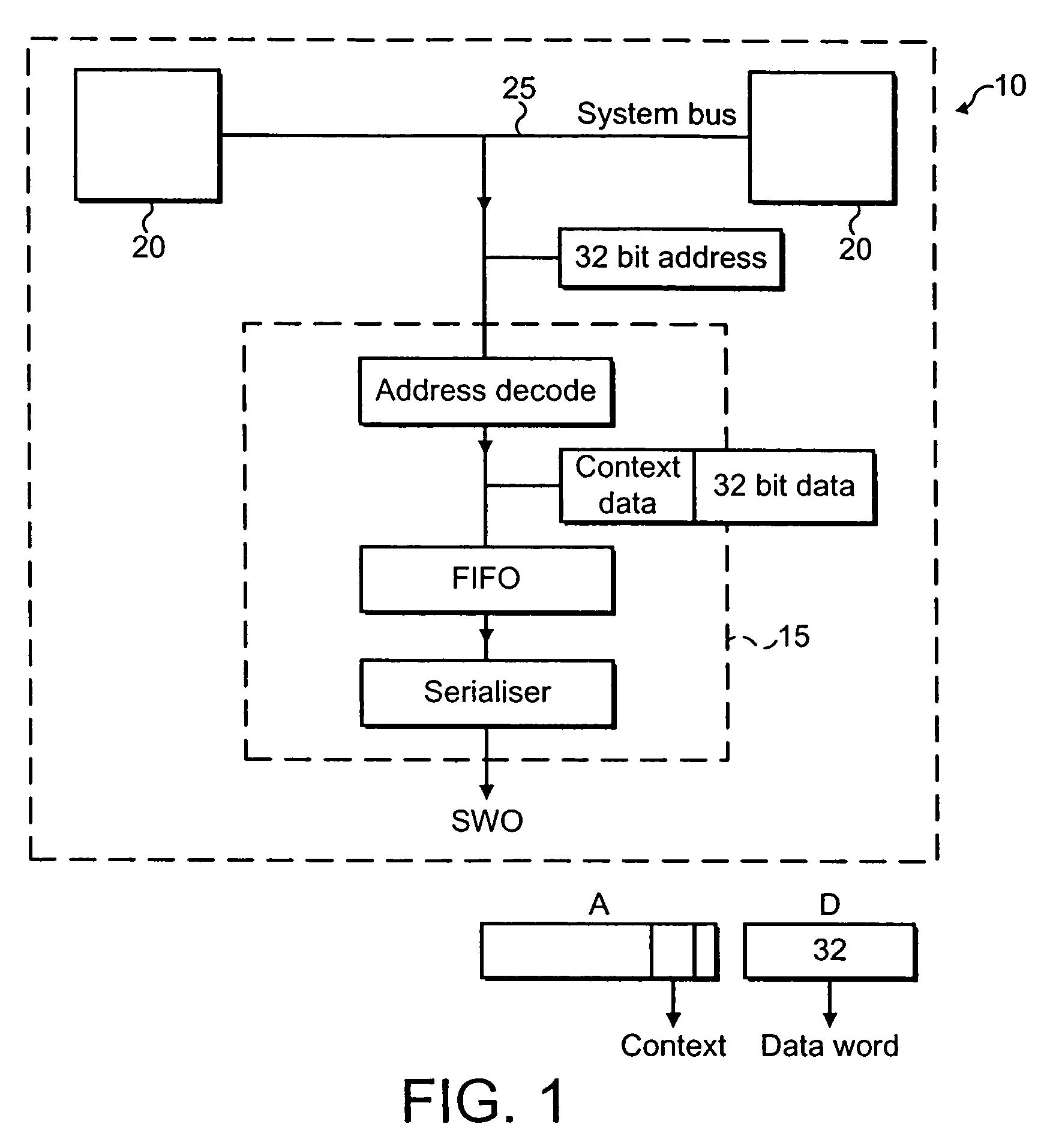Diagnostic data capture within an integrated circuit
a technology of integrated circuits and diagnostic data, applied in the field of integrated circuits, can solve the problems of imposing a significant load on the program concerned, consuming a relatively large amount of circuit resources, and not having a substantial use of the circuit area devoted to this diagnostic use in the production integrated circui
- Summary
- Abstract
- Description
- Claims
- Application Information
AI Technical Summary
Benefits of technology
Problems solved by technology
Method used
Image
Examples
Embodiment Construction
[0037]With reference to FIG. 1, an integrated circuit 10 is shown comprising a diagnostic data capture circuit 15 operable to capture diagnostic data travelling on a system bus 25 connecting two functional circuits 20. The diagnostic data capture circuit 15 provides an interface between data being processed by a data processing system and a single wire output and is sometimes referred to as a single wire output (SWO) device.
[0038]In the device of FIG. 1 the diagnostic data capture circuit is arranged to access data travelling along the bus between the functional circuits. It is essentially a passive device that apart from providing access to the data does not otherwise impact the system or affect the data in any way.
[0039]The diagnostic data capture device comprises an address decoder a FIFO and a serialiser. The diagnostic data capture device is operable to access data words travelling along a data portion of the bus and also to access an address that the data is to be written to t...
PUM
 Login to view more
Login to view more Abstract
Description
Claims
Application Information
 Login to view more
Login to view more - R&D Engineer
- R&D Manager
- IP Professional
- Industry Leading Data Capabilities
- Powerful AI technology
- Patent DNA Extraction
Browse by: Latest US Patents, China's latest patents, Technical Efficacy Thesaurus, Application Domain, Technology Topic.
© 2024 PatSnap. All rights reserved.Legal|Privacy policy|Modern Slavery Act Transparency Statement|Sitemap



